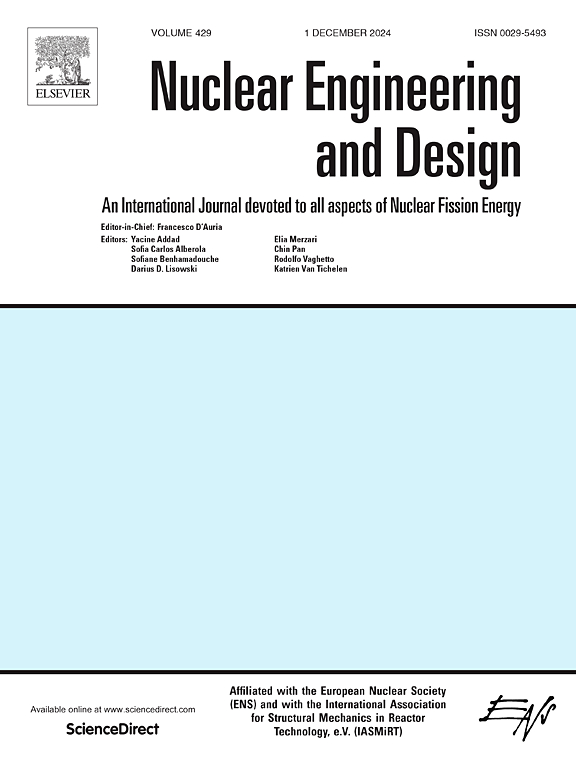Seismic performance analysis of suspended storage structure in lead-based reactor considering the coupled effects of liquid sloshing and soil condition
IF 1.9
3区 工程技术
Q1 NUCLEAR SCIENCE & TECHNOLOGY
引用次数: 0
Abstract
LEAd-based Reactor (LEAR) has good inherent safety, potentially making it the first commercial application of the fourth-generation nuclear power system. Facing the complex inland seismic geological environment, the sloshing of liquid heavy metal coolant with pool layout will significantly influence the seismic performance of suspended storage structure. To improve the seismic safety of the LEAR, a comprehensive study of the effect of liquid sloshing and soil conditions was discussed by combining the Compact Viscoelastic (CV) element for soil-structure interaction analysis, fluid–structure interaction for sloshing analysis and refined simulation of suspended storage structure within the framework of finite elements. And then, the verification example of cylindrical liquid storage vessel was presented to demonstrate the accuracy and efficiency of the proposed fluid–structure interaction model. Finally, the analysis of displacement, acceleration, maximum interlayer displacement angles, and other dynamic responses are carried out to study the effect of liquid sloshing features and soil conditions. The results showed that the properties of the coolant and internal components affect the response of the suspended storage structure, and the soft soil significantly increases the sloshing wave height of the internal fluid, while the overall displacement patterns and amplitude variations are relatively modest. The findings of this study may provide theoretical support and technical foundation for seismic safety evaluation and optimization design of LEAR suspended storage structure under the complex soil site.
求助全文
约1分钟内获得全文
求助全文
来源期刊

Nuclear Engineering and Design
工程技术-核科学技术
CiteScore
3.40
自引率
11.80%
发文量
377
审稿时长
5 months
期刊介绍:
Nuclear Engineering and Design covers the wide range of disciplines involved in the engineering, design, safety and construction of nuclear fission reactors. The Editors welcome papers both on applied and innovative aspects and developments in nuclear science and technology.
Fundamentals of Reactor Design include:
• Thermal-Hydraulics and Core Physics
• Safety Analysis, Risk Assessment (PSA)
• Structural and Mechanical Engineering
• Materials Science
• Fuel Behavior and Design
• Structural Plant Design
• Engineering of Reactor Components
• Experiments
Aspects beyond fundamentals of Reactor Design covered:
• Accident Mitigation Measures
• Reactor Control Systems
• Licensing Issues
• Safeguard Engineering
• Economy of Plants
• Reprocessing / Waste Disposal
• Applications of Nuclear Energy
• Maintenance
• Decommissioning
Papers on new reactor ideas and developments (Generation IV reactors) such as inherently safe modular HTRs, High Performance LWRs/HWRs and LMFBs/GFR will be considered; Actinide Burners, Accelerator Driven Systems, Energy Amplifiers and other special designs of power and research reactors and their applications are also encouraged.
 求助内容:
求助内容: 应助结果提醒方式:
应助结果提醒方式:


